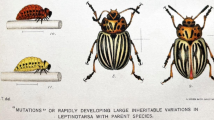Abstract
The depletion of variation at MHC loci, which play a crucial role in pathogen recognition, has been postulated to be one of important extinction risk factors for endangered populations. Thus, it is important to understand how selection affects the level of polymorphism in these genes when populations undergo a reduction in size. We followed MHC diversity in computer simulations of population bottlenecks. The fates of MHC alleles in the simulations were determined either by drift, or by balancing selection resulting from host–parasite coevolution. We found that the impact of selection on MHC polymorphism in bottlenecked populations was dependent upon the timescales involved. Initially, selection maintained lower number of alleles than drift, but after ~40 generations of hosts selection maintained higher MHC diversity, as compared to drift. The adverse effects of decreased MHC polymorphism on population viability may be, to some extent, compensated for if selection helps to retain MHC alleles which show high functional diversity, which should allow protection against a broader range of pathogens. Our simulation shows, however, that the mean divergence of alleles retained under selection in bottlenecked populations is not, on average, significantly higher than the divergence due to drift.















Similar content being viewed by others
References
Aguilar A, Roemer G, Debenham S, Binns M, Garcelon D, Wayne RK (2004) High MHC diversity maintained by balancing selection in an otherwise genetically monomorphic mammal. Proc Natl Acad Sci USA 101:3490–3494
Babik W, Durka W, Radwan J (2005) Sequence diversity of the MHC DRB gene in the Eurasian beaver (Castor fiber). Mol Ecol 14:4249–4257
Biedrzycka A, Radwan J (2008) Population fragmentation and major histocompatibility complex variation in the spotted suslik, Spermophilus suslicus. Mol Ecol 17:4801–4811
Bollmer JL, Vargas FH, Parker PG (2007) Low MHC variation in the endangered Galapagos penguin (Spheniscus mendiculus). Immunogenetics 59:593–602
Borghans JAM, Beltman JB, De Boer RJ (2004) MHC polymorphism under host-pathogen coevolution. Immunogenetics 55:732–739
de Campos-Lima PO, Levitsky V, Imreh MP, Gavioli R, Masucci MG (1997) Epitope-dependent selection of highly restricted or diverse T cell receptor repertoires in response to persistent infection by Epstein-Barr virus. J Exp Med 186:83–89
Doherty PC, Zinkernagel RM (1975) Enhanced immunological surveillance in mice heterosytous at H-2 gene complex. Nature 256:50–52
Ellegren H, Hartman G, Johansson M, Andersson L (1993) Major histocompatibility complex monomorphism and low-levels of DNA-fingerprinting variability in a reintroduced and rapidly expanding population of beavers. Proc Natl Acad Sci USA 90:8150–8153
Froeschke G, Sommer S (2005) MHC class II DRB variability and parasite load in the striped mouse (Rhabdomys pumilio) in the southern Kalahari. Mol Biol Evol 22:1254–1259
Garrigan D, Hedrick PW (2003) Detecting adaptive molecular polymorphism, lessons from the MHC. Evolution 57:1707–1722
Hansson B, Richardson DS (2005) Genetic variation in two endangered Acrocephalus species compared to a widespread congener: estimates based on functional and random loci. Anim Conserv 8:83–90
Hedrick P (1972) Maintenance of genetic variation with a frequency-dependent selection as compared to overdominance model. Genetics 72:771–775
Hedrick P (2003) The major histocompatibility complex (MHC) in declining populations: an example of adaptive variation. In: Holt WV, Pickard AR, Rodger JC, Wildt DE (eds) Reproduction science and integrated conservation. Cambridge University Press, Cambridge, pp 97–113
Hedrick PW, Lee RN, Garrigan D (2002) Major histocompatibility complex variation in red wolves: evidence for common ancestry with coyotes and balancing selection. Mol Ecol 11:1905–1913
Hughes AL (1991) MHC polymorphism and the design of captive breeding programs. Conserv Biol 5:249–251
Mainguy J, Worley K, Cote SD, Coltman DW (2007) Low MHC DRB class II diversity in the mountain goat: past bottlenecks and possible role of pathogens and parasites. Conserv Genet 8:885–891
McClelland EE, Penn DJ, Potts WK (2003) Major histocompatibility complex heterozygote superiority during coinfection. Infect Immun 71:2079–2086
Mikko S, Andersson L (1995) Low major histocompatibility complex class-II diversity in European and North-American moose. Proc Natl Acad Sci USA 92:4259–4263
O’Brien S, Evermann F (1988) Interactive influence of infectious disease and genetic diversity in natural populations. Trends Ecol Evol 3:254–259
Piertney SB, Oliver MK (2006) The evolutionary ecology of the major histocompatibility complex. Heredity 96:7–21
Radwan J, Kawalko A, Wojcik JM, Babik W (2007) MHC-DRB3 variation in a free-living population of the European bison, Bison bonasus. Mol Ecol 16:531–540
Radwan J, Biedrzycka A, Babik W (2009) Does reduced MHC diversity decrease viability of vertebrate populations? Biol Conserv. doi:10.1016/j.biocon.2009.07.026
Robertson A (1962) Selection for heterozygotes in small populations. Genetics 47:1291–1300
Siddle HV, Kreiss A, Eldridge MDB, Noonan E, Clarke CJ, Pyecroft S, Woods GM, Belov K (2007) Transmission of a fatal clonal tumor by biting occurs due to depleted MHC diversity in a threatened carnivorous marsupial. Proc Natl Acad Sci USA 104:16221–16226
Snell J (1968) The H-2 locus of the mouse: observational and speculations concerning its comparative genetics and its polymorphism. Folia Biol 14:335–338
Sommer S (2005) The importance of immune gene variability (MHC) in evolutionary ecology and conservation. Front Zool 12:16
Stern LJ, Brown JH, Jardetzky TS, Gorga JC, Urban RG, Strominger JL, Wiley DC (1994) Crystal structure of the human class II MHC protein HLA-DR1 complexed with an influenza virus peptide. Nature 368:215–221
Westerdahl H, Hansson B, Bensch S, Hasselquist D (2004) Between-year variation of MHC allele frequencies in great reed warblers: selection or drift? J Evol Biol 17:485–492
Zhu L, Ruan XD, Ge YF, Wan QH, Fang SG (2007) Low major histocompatibility complex class II DQA diversity in the Giant Panda (Ailuropoda melanoleuca). BMC Genet 8:29
Acknowledgements
We thank Maciej Dańko and Filip Kapustka for advice, Wiesiek Babik for reading earlier version of the manuscript, and Referees for their helpful comments.
Author information
Authors and Affiliations
Corresponding author
Rights and permissions
About this article
Cite this article
Ejsmond, M.J., Radwan, J. MHC diversity in bottlenecked populations: a simulation model. Conserv Genet 12, 129–137 (2011). https://doi.org/10.1007/s10592-009-9998-6
Received:
Accepted:
Published:
Issue Date:
DOI: https://doi.org/10.1007/s10592-009-9998-6




